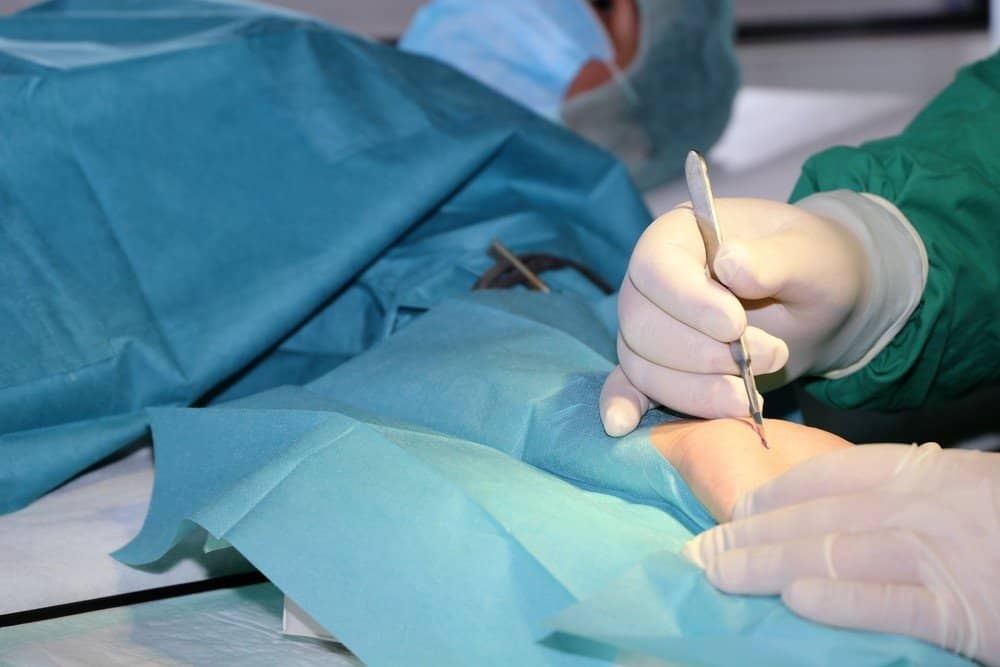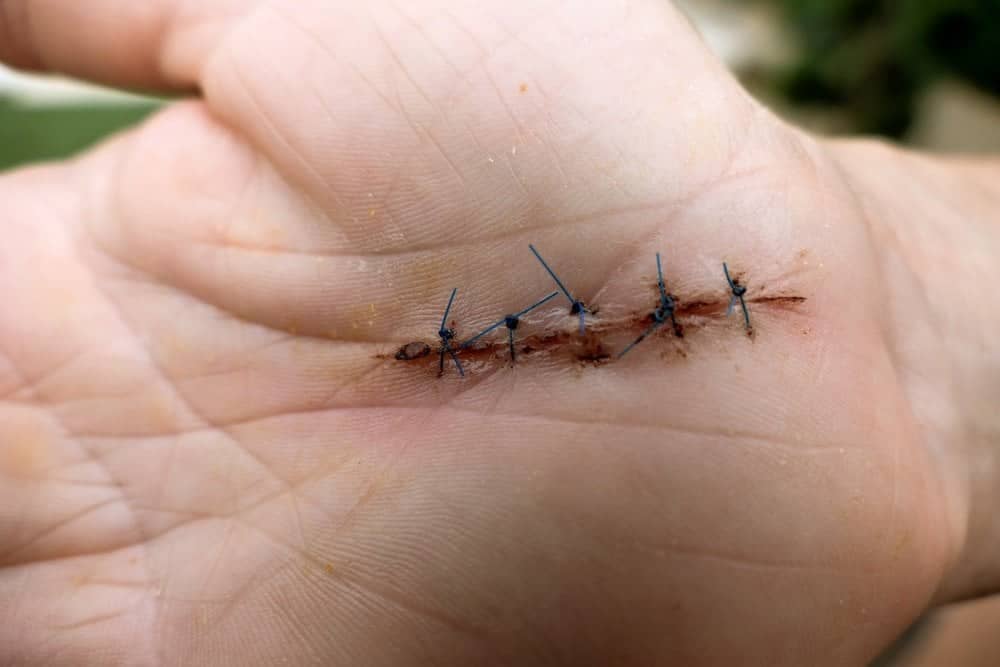What happens during carpal tunnel Release (Decompression) surgery?
Carpal tunnel release is an outpatient procedure, which means that you can go home after the procedure.
Carpal Tunnel Surgery also called Carpal Tunnel Decompression surgery for Carpal Tunnel Syndrome
Surgery Overview
During open carpal Tunnel surgery, the transverse carpal ligament is cut, which releases pressure on the median nerve and relieves the symptoms of carpal tunnel syndrome.
An incision is made at the base of the palm of the hand. This allows to see the transverse carpal ligament. After the ligament is cut, the skin is closed with stitches. The gap where the ligament was cut is left alone in order to widen the carpal tunnel to relieve median nerve compression.
For open carpal tunnel release surgery, a patient does not need to stay in the hospital, it is done under local anaesthesia, and patient can go home on the same day.
Carpal Tunnel Release Surgery
In open carpal tunnel release surgery, the transverse carpal ligament is cut, releasing the median nerve. The size and shape of the incision may vary.
Indication for Surgical treatment for Carpal Tunnel Syndrome
Surgery is recommended when carpal tunnel syndrome does not respond to non-surgical treatments or has already become severe. The goal of surgery is to increase the size of the tunnel in order to decrease pressure on the nerves and tendons that pass through the tunnel. This is done by cutting (“releasing”) or (‘decompressing’) the ligament that covers the carpal tunnel at the base of the palm. This ligament is called the transverse carpal ligament.
Surgery for carpal tunnel syndrome is an outpatient procedure that is usually performed under local anesthesia and you will be awake. But sedation can be added for comfort. After surgery, brief discomfort lasts 24 to 72 hours. However, patients often experience complete night time symptom relief even the night after surgery. Stitches are removed 10 to 14 days after surgery. Hand and wrist use for everyday activities are gradually restored by advising exercising.
Heavier activities with the affected hand are restricted for 4 to 6 weeks. Recovery times vary depending on the patient’s age, general health, severity of carpal tunnel syndrome, and the length of time symptoms have been present. Strength and sensation continue to improve over the following year.
Many patients who undergo carpal tunnel release surgery achieve nearly complete relief of all symptoms. Recovery in some individuals with severe carpal tunnel syndrome may be slow and may not be complete due to nerve injury caused by prolongd compression. Carpal tunnel syndrome can reoccur, but this is not common.

Carpal Tunnel Release Surgery, explained in more detail :
In carpal tunnel release surgery, the transverse carpal ligament is cut, releasing the median nerve. The size and shape of the incision may vary.
It is a myth that Carpal tunnel syndrome occurs only in office workers or factory assembly line workers. The truth is patients with carpal tunnel syndrome have never done office work or worked on an assembly line.
Anyone can get carpal tunnel syndrome, but it is unusual before age 20. The chance of getting carpal tunnel syndrome increases with age. Women have a slightly higher chance of getting carpal tunnel syndrome. It affects people who use their wrists and hands repeatedly at work and at play.
Myth: It takes a long time to recover from surgery to treat carpal tunnel syndrome. Truth: The bandage that covers the stitches after surgery can be removed in a few days. The hand can then be used for light activities. Making a fist is encouraged. Full range of finger motion and symptom relief is usually seen within 2 weeks after stitches have been removed. You can usually return to most activities by 6 weeks. Return to work depends on many factors, such as type of work, how much control you have over your work, and workplace equipment.
Myth: Surgery usually doesn’t work. Truth: Surgery has a high success rate, over 90%.
The tingling sensation and waking up at night is usually relieved fairly quickly, as is any pain that is coming from the carpal tunnel. Numbness may take longer to be relieved, even up to 3 months. When the carpal tunnel syndrome has become severe, relief may not be complete. There may be some pain in the palm around the incisions that can last up to a few months. Other after-surgery pain may not be related to carpal tunnel syndrome. Patients who complain of pain or whose symptoms remain unchanged after surgery either had severe carpal tunnel syndrome with median nerve damage. Only a small percentage of patients do not gain complete relief from symptoms.
Myth: Carpal tunnel syndrome frequently comes back after surgery. Truth: Recurrences are unusual.
What happens during carpal tunnel release surgery ?
You usually lie on your back for carpal tunnel release surgery, with your arm stretched out on an operating board by your side. Your will be in a comfortable position.
You’ll be given local anaesthetic injections so you won’t feel any discomfort during the procedure. It will be tested whether or not you can feel any pain before starting the operation. You may still feel some pressure once the anaesthetic is working.

